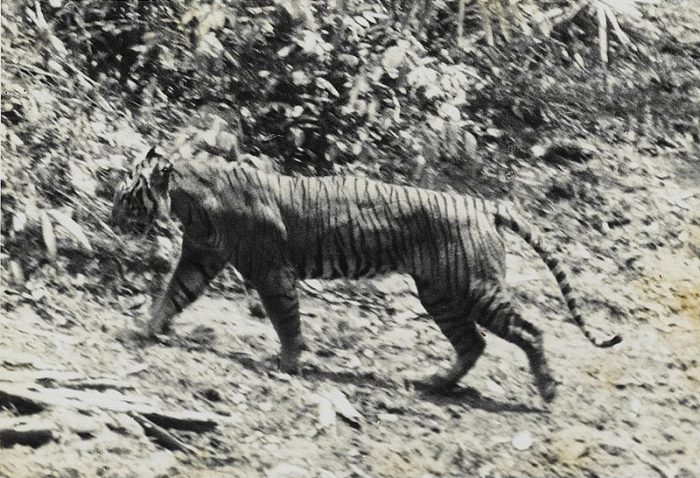A survey conducted in 2018 in India is grrrrrr-eat news for tiger lovers. The wild numbers of this large cat are 33% higher than just four years ago: 2,967, up from 2,226 in 2014.
This looks to be a real sign that conservation is working, offering hope that the majestic predators may even be able to thrive in the coming years. It wasn't always this way.
A difficult century

The Javan tiger went extinct in the 1970s. (Andries Hoogerwerf/Wikimedia Commons)
The tiger is a symbol of strength, courage, willpower, and luck. And yet for the animals themselves, their luck had almost run out.
Tigers began the 20th century (1900–1999) with numbers around 100,000. They ended this period in serious danger of extinction. Several species — including the Caspian, Javan, and Bali tiger — all disappeared during this time, thanks to hunting and habitat loss. So either countries needed to work to save tigers and their homes or these animals would soon be gone completely.
India became one of the countries at the forefront of tiger conservation. In 1973, its government launched Project Tiger. Its mission? Protect tiger habitats, set up reserves, fight poachers (illegal hunters), and do whatever else was necessary to save tigers from extinction.
A challenging survey
"I wouldn't count me if I were you..." (Getty Embed)
If you think that saving tigers is a challenge, you should try counting them. Not only are tigers still a dangerous animal (you don't just walk around the jungle taking attendance before cat class begins), they also do not like to be seen. These are wary hunters who live alone.
To accurately record their numbers, 26,000 camera traps were set up across 380,000 square km (146,000 sq. mi., or two-and-a-half times the size of California!). A camera trap is a camera that is placed in the wild and designed to automatically take a photo when it is approached. In total, 350,000 images had to be sorted through by researchers to come up with an accurate number. It is such a huge survey that it is currently being looked at by Guinness World Records to see if it's the largest ever!
Better numbers? Or better counting?
A tigress and her two cubs in Ranthambhore National Park, India. (Getty Embed)
So, you've got a potential world record wildlife survey that gives us the best tiger numbers in years. What's not to like?
While experts are generally upbeat, they do warn that these numbers might be higher simply because this survey was the most thorough one ever conducted. In other words, maybe they just did a better job of counting the tigers this time!
Either way, one thing is certain: Tigers have been through a lot the last hundred years or so, and human assistance is key to making sure that the next hundred are better. Who's with Project Tiger?
We are!
 Tigers are finally beginning to recover after reaching dangerously low numbers in recent years. (© Andrey Gudkov - Dreamstime.com)
Tigers are finally beginning to recover after reaching dangerously low numbers in recent years. (© Andrey Gudkov - Dreamstime.com)









